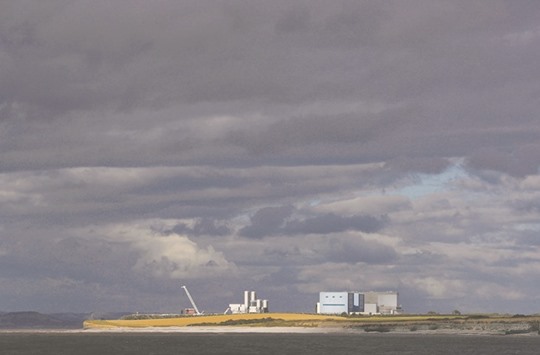Britain yesterday approved plans to expand an offshore wind farm project that could ultimately have more than 600 turbines spread across an area of the North Sea more than twice the size of London.
The Hornsea Two windfarm project, to be built by Dong Energy, is part of Britain’s push to invest in new electricity generation capacity needed to overcome a squeeze on power supplies in the next decade.
All but one of Britain’s existing nuclear plants, which produce around a fifth of the country’s electricity, are set to close by 2030 as they come to the end of their operational lifespans.
And the government plans to close coal-fired plants by 2025 as a part of its efforts to meet climate targets.
Plans for a new 18bn pound nuclear power plant, Hinkley C, are currently under review amid spiralling costs and concerns over Chinese investment in the project.
If built, Hornsea Two, some 89km off the coast of Yorkshire, will have 300 turbines and is expected to generate around 1.8GW of electricity, enough to power up to 1.6mn homes, Dong Energy said in a statement.
The Danish company has already secured planning permission for the adjacent 1.2GW Hornsea One development.
Earlier this year, Dong Energy made a final decision to go ahead with this project, which it said could begin generating electricity in 2020 and would be the world’s largest offshore wind farm.
“We have already invested 6bn pounds ($7.79bn) in the UK, and Hornsea Project Two provides us with another exciting development opportunity in offshore wind,” Brent Cheshire, Dong Energy’s UK Chairman said.
The two sites together, at 3GW, would also have a similar capacity to the Hinkley C nuclear project, which, if it goes ahead would be built by French company EDF with financial backing from a Chinese state-owned company.
The government said its next round of renewable funding will focus on offshore wind and has said around 10GW of capacity could be installed by the end of the decade.
l Prime minister Theresa May has told China’s leader that Britain wants to strengthen trade and business ties, an attempt to reassure the world’s second largest economy after London delayed a $24bn nuclear project.
May’s surprise decision to review the building of Britain’s first nuclear plant in decades upset China, which questioned whether Chinese money was still welcome in Britain just weeks after the June 23 Brexit vote to leave the European Union.
After Beijing’s expression of frustration, May wrote to President Xi Jinping and Premier Li Keqiang saying Britain attached great importance to Sino-British cooperation.
Britain “looks forward to strengthening cooperation with China on trade and business and on global issues”, China’s foreign ministry said, citing the letter.
A source in May’s office confirmed the contents of the letter, which was hand-delivered by Alok Sharma, parliamentary under secretary of state at the foreign and commonwealth office:
“This is part of what you’d expect the prime minister to do in terms of our relations with the wider world. It’s all part of Britain remaining an outward-looking country as we head toward Brexit,” the source said.
China’s $11.3tn economy is currently more than four times as big as Britain’s at $2.4tn.
Cast as the jewel illustrating a ‘Golden Era’ of relations between the two powers, the financing deal for the Hinkley Point nuclear project in southwestern England was signed in Downing Street during a state visit to Britain by Xi last year.
May’s predecessor, David Cameron, said the Hinkley Point project was a sign of Britain’s openness to foreign investment, but May is concerned about the security implications of the planned Chinese investment, according to a former colleague.
May’s most striking corporate intervention since winning power in the turmoil which followed the Brexit vote indicates a more cautious view of Chinese investment and a willingness to take a tough line with EU allies such as France.
Under plans drawn up by Cameron, French utility EDF and China General Nuclear Power Corp would fund the cost of building two Areva European Pressurised Water Reactors at the Hinkley C nuclear plant in Somerset.

Hinkley Point A and B nuclear power stations are seen near Bridgewater in Britain.

